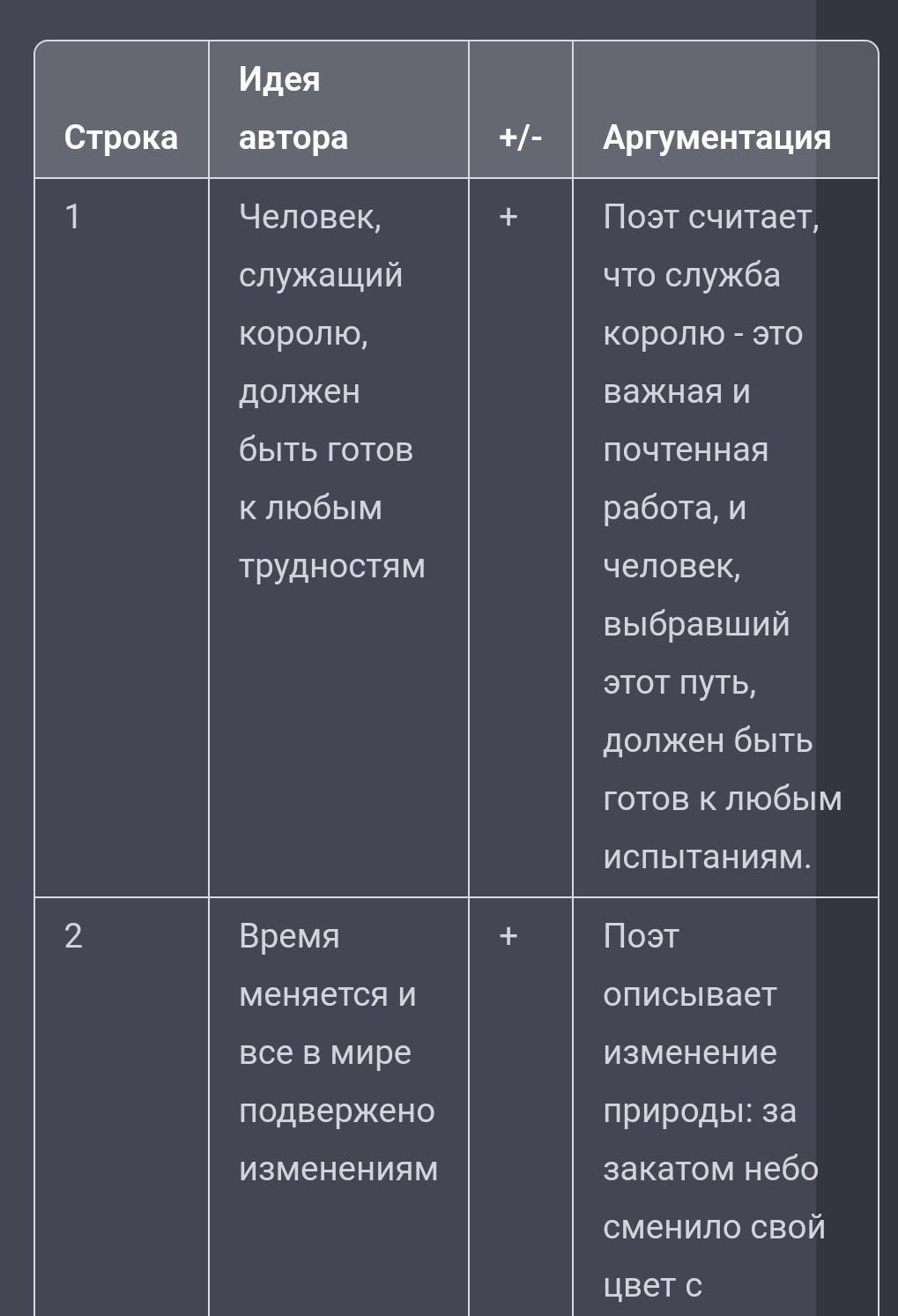Предмет: Литература,
автор: Sadona
2. Нарисуйте в тетради таблицу анализа строк рубаи. Укажите идею поэта, затем, согласны вы с ней или нет, и аргументируйте ваше мнение: Рубан Алишера Навои Строка Кто службой шаху добывает хлеб, Тот может быть и хром, и глух, и слеп. Шафраном обернулся изумруд Голубизну небес сменил закат Идея автора +/- Аргументируйте ваше мнение. Помогите пожалуйста.
Ответы
Автор ответа:
5
Ответ:
Таблица на фотографиях ниже.
Мое мнение согласно с идеями автора в обеих строках:
В первой строке поэт утверждает, что служба королю может быть очень трудной, и человек, выбравший этот путь, должен быть готов к любым трудностям. Это важное заявление, которое актуально и сегодня, когда служба государству требует высокой квалификации и отдачи.
Во второй строке автор говорит о неизбежности изменений в мире. Жизнь постоянно меняется, и мы должны быть готовы к адаптации к этим изменениям. Кроме того, изображение заката и смены цвета неба может быть интерпретировано как символическое изображение жизни и смерти, напоминая нам о том, что все, что живет, рано или поздно должно умереть.
Приложения:


Похожие вопросы
Предмет: Українська мова,
автор: Аноним
Предмет: Химия,
автор: Аноним
Предмет: Русский язык,
автор: temirgalizhanbike201
Предмет: История,
автор: bogdanar2006
Предмет: Английский язык,
автор: Аноним